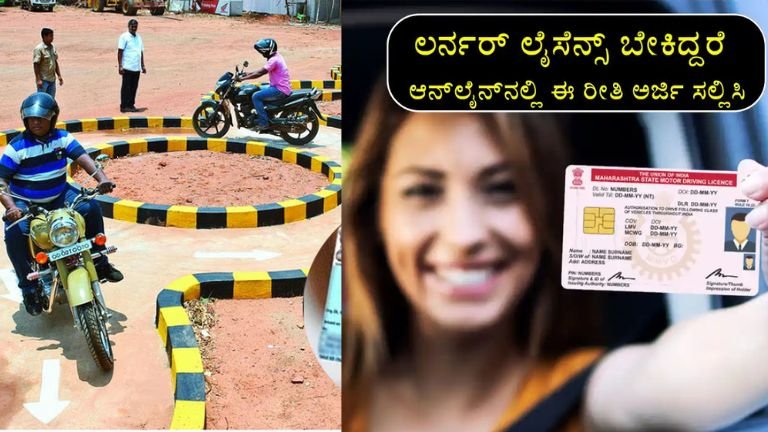RTO Driving Licence (DL) Application for All Vehicle Owners in India. Driving Licence Application (DL) at RTO: A Mandatory Step for All Vehicle Owners
Introduction
A Driving Licence (DL) is a legal requirement for anyone operating a motor vehicle on public roads in India. Issued by the Regional Transport Office (RTO) under the Motor Vehicles Act, 1988, the licence certifies that an individual is qualified to drive a particular category of vehicle. Whether you’re a two-wheeler rider, four-wheeler owner, or a commercial driver, holding a valid driving licence is not optional—it’s mandatory by law. This article covers in detail the process of DL application for all vehicle owners, eligibility criteria, required documents, and how the system ensures road safety and compliance.
Who Needs to Apply for a Driving Licence?
Every motor vehicle owner or driver in India must apply for a driving licence through the RTO. The licence categories include:
- Two-Wheelers (without gear) – Scooters and mopeds
- Two-Wheelers (with gear) – Motorcycles and sports bikes
- LMV (Light Motor Vehicle) – Personal cars, jeeps, and vans
- Transport or Commercial Vehicle – Trucks, taxis, delivery vans
- Heavy Motor Vehicles (HMV) – Buses, trailers, tankers
Regardless of whether you own the vehicle or are simply operating it, a valid DL is mandatory to drive legally. Vehicle ownership does not automatically authorize you to drive; you must obtain a licence for the specific vehicle type.
Eligibility Criteria for Applying
To apply for a driving licence, an applicant must meet the following criteria:
- Must be at least 16 years old for non-geared two-wheelers (with parental consent).
- Must be 18 years or older to apply for geared two-wheelers or LMVs.
- Must be 20 years or above with at least 1 year of LMV driving experience for commercial or transport vehicle licences.
- Should hold a valid Learner’s Licence (LL) for a minimum of 30 days and not more than 180 days before applying for the permanent DL.
The applicant should also be mentally and physically fit to operate a vehicle safely.
Documents Required for DL Application
Here are the key documents required when applying for a driving licence at any RTO in India:
- Proof of Age – Aadhaar card, birth certificate, passport, PAN card, etc.
- Proof of Address – Utility bill, rental agreement, passport, Aadhaar card
- Passport-size photographs (usually 2 to 4 copies)
- Learner’s Licence copy
- Application Form (Form 2 for permanent licence)
- Medical Certificate (Form 1A) – Required for transport vehicle licences and applicants above 40 years
- Form 5 for commercial driving licence (issued by a recognized driving school)
How to Apply for a Driving Licence: Online & Offline Methods
Online Application Process:
Visit the official Ministry of Road Transport and Highways portal
- Click on “Driving Licence Related Services”
- Select your State and proceed to the RTO services page
- Choose Apply for Driving Licence
- Fill in the online form with personal and learner’s licence details
- Upload scanned documents and photograph
- Schedule your driving test appointment
- Pay the prescribed fee via online payment gateway
After submission, an acknowledgement slip and test date are generated. The driving test is usually conducted at the nearest RTO office.
Offline Application Process:
- Visit your local RTO office and obtain the DL application form
- Fill out the form and attach all necessary documents
- Submit the form along with the prescribed fee at the RTO
- Book a slot for the driving test
- Appear for the test on the scheduled date
Upon passing the test, the driving licence is dispatched by post or can be downloaded digitally.
The Driving Test and Verification Process
The final step in obtaining a driving licence is passing the driving test. For LMVs and two-wheelers, the test involves:
- Driving within a pre-marked track
- Performing U-turns, reverse driving, gear shifts, and proper braking
- Demonstrating road sign recognition and rule adherence
For commercial vehicle licences, additional assessments on road handling, cargo management, and highway driving may be conducted.
The RTO officer evaluates the driving skills and decides whether the applicant qualifies. Biometric verification and photograph capture are part of the process.
Validity and Renewal of Driving Licence
A standard driving licence is valid for:
- 20 years from the date of issue or until the age of 40 (whichever is earlier) for non-commercial licences
- 5 years for commercial or transport vehicle licences
The licence must be renewed before expiry, and a medical fitness certificate is often required during renewal. The process can be done online via the Parivahan portal or at the RTO.
Driving without a valid licence can attract heavy penalties under the Motor Vehicles (Amendment) Act, including fines up to ₹5,000 or imprisonment in some cases.
Driving Licence Smart Card and Digital Access
Modern driving licences are issued in the form of a smart card, which includes an embedded chip containing all biometric and licence-related data. Applicants can also link their DL to DigiLocker for digital access and verification during vehicle checks.
The government is also promoting the faceless services initiative, where licence renewal, address changes, and duplicate licence requests can be done without visiting the RTO physically, reducing delays and corruption.
Applying for a driving licence is not merely a formality—it is a responsibility that comes with being a vehicle owner or operator. The RTO driving licence process ensures that only trained and verified individuals are allowed to drive on public roads, thereby reducing accidents and promoting road safety. With the introduction of online services, applying for a DL has become easier and faster, bringing transparency and convenience to millions. Every vehicle owner, regardless of the vehicle type, must comply with this legal mandate to ensure safe and lawful road use. Make sure your documents are in order, your skills are tested, and your licence is always valid—because responsible driving begins with proper licensing.
APPLY LINK 🖇️✅
